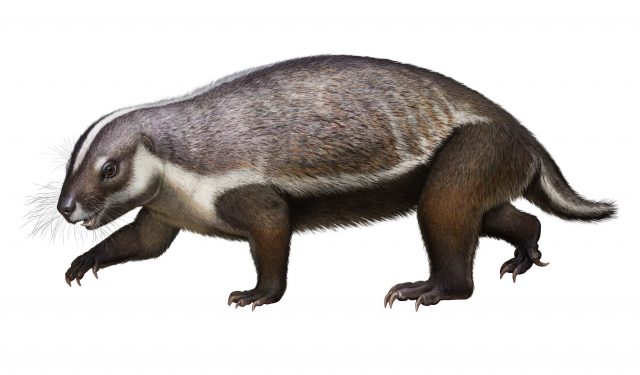The history of the Caribbean's original islanders comes into sharper focus in a new Nature study that combines decades of archaeological work with advancements in genetic technology.
An international team led by Harvard Medical School's David Reich analyzed the genomes of 263...
A prehistoric croc measuring more than five metres long -- dubbed the 'swamp king' -- ruled south eastern Queensland waterways only a few million years ago.
University of Queensland researchers identified the new species of prehistoric croc -- which they...
New research published today in the Journal of Vertebrate Paleontology describes a bizarre 66 million-year-old mammal that provides profound new insights into the evolutionary history of mammals from the southern supercontinent Gondwana -- recognized today as Africa, South America, Australia, Antarctica,...
Together with his colleague Hussam Zaher of the University in São Paulo, Senckenberg scientist Krister Smith described the world's oldest known fossils of a python. The almost completely preserved snakes with a length around one meter were discovered in...
Scientists have found the most elaborately dressed-to-impress dinosaur ever described and say it sheds new light on how birds such as peacocks inherited their ability to show off.
The new species, Ubirajara jubatus, was chicken-sized with a mane of long...
Was burial of the dead practiced by Neandertals or is it an innovation specific to our species? There are indications in favour of the first hypothesis but some scientists remain sceptical. For the first time in Europe, however, a...
Ancient Punt was a major trading partner of Egyptians for at least 1,100 years. It was an important source of luxury goods, including incense, gold, leopard skins, and living baboons. Located somewhere in the southern Red Sea region in...
A pioneering reconstruction of the brain belonging to one of the earliest dinosaurs to roam the Earth has shed new light on its possible diet and ability to move fast.
Research, led by the University of Bristol, used advanced imaging and 3-D...
A mysterious small marine reptile dating from 150 million years ago has been identified as a new species that may have been capable of diving very deeply. The well-preserved specimen was found in a Late Jurassic deep marine deposit along the...
Was burial of the dead practiced by Neandertals or is it an innovation specific to our species? There are indications in favor of the first hypothesis but some scientists remain skeptical. For the first time in Europe, however, a...
New lipid residue analyses have revealed a dominance of animal products, such as the meat of animals like pigs, cattle, buffalo, sheep and goat as well as dairy products, used in ancient ceramic vessels from rural and urban settlements...


















